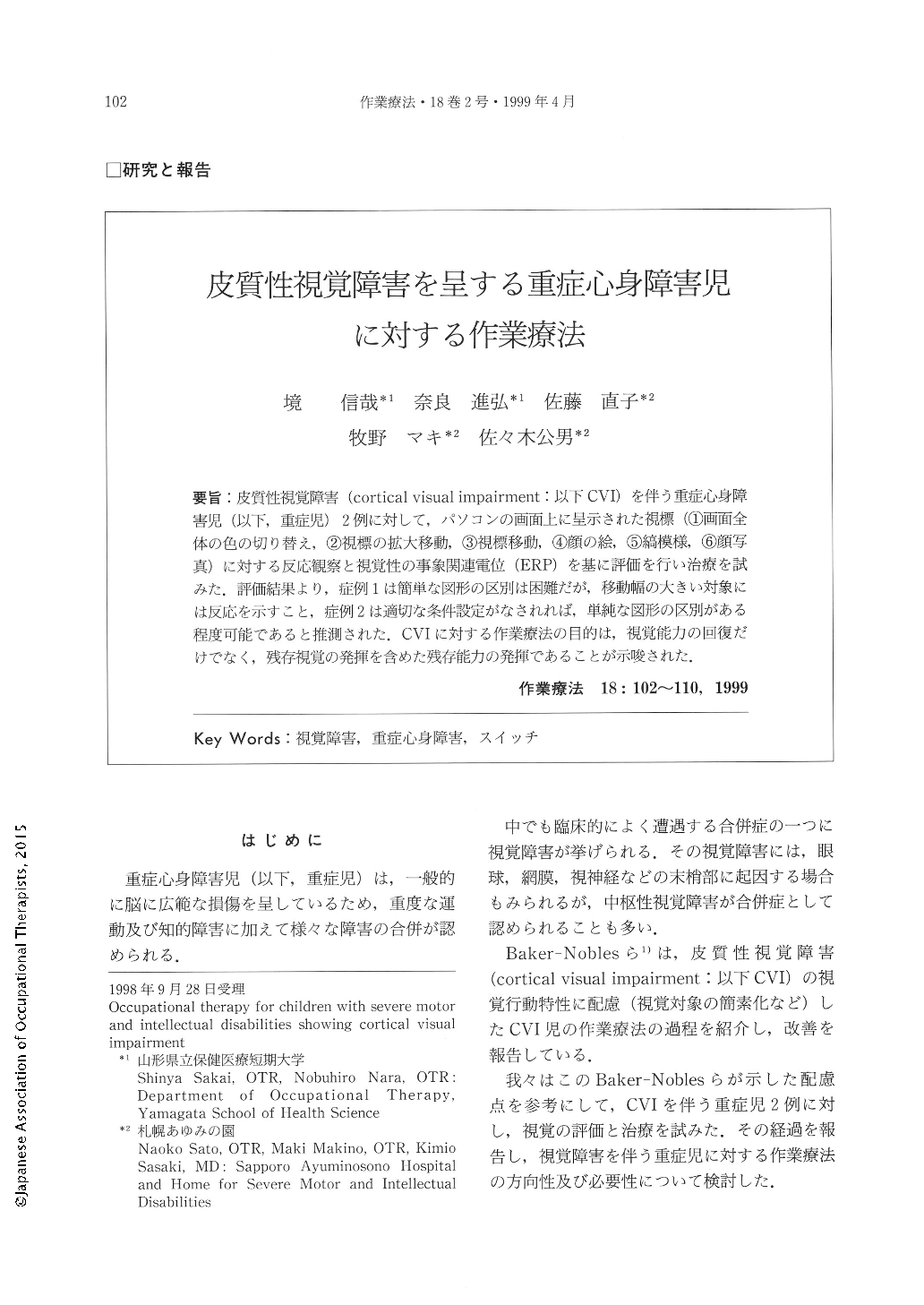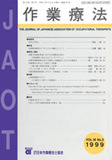Japanese
English
- 販売していません
- Abstract 文献概要
- 1ページ目 Look Inside
- 参考文献 Reference
- サイト内被引用 Cited by
要旨:皮質性視覚障害(cortical visual impairment:以下CVI)を伴う重症心身障害児(以下,重症児)2例に対して,パソコンの画面上に呈示された視標(①画面全体の色の切り替え,②視標の拡大移動,③視標移動,④顔の絵⑤縞模様,⑥顔写真)に対する反応観察と視覚性の事象関連電位(ERP)を基に評価を行い治療を試みた.評価結果より,症例1は簡単な図形の区別は困難だが,移動幅の大きい対象には反応を示すこと,症例2は適切な条件設定がなされれば,単純な図形の区別がある程度可能であると推測された.CVIに対する作業療法の目的は,視覚能力の回復だけでなく,残存視覚の発揮を含めた残存能力の発揮であることが示唆された.
We tried to assess and treat two children with severe motor and intellectual disabilities, and who were showing cortical visual impairment (CVI), by using a personal computer and visually eventrelated potential (ERP). The programs used by a personal computer were as follows : ① changing color on cathode-ray tube (CRT), ②cenlarging and moving of visual targets, ③moving of visual targets, ④ changing pictures of face, ⑤ changing striped pattern, ⑥ changing photos of face. Although case 1 could not discriminate simple shapes, she could react to a wide moving target. In case 2, if an appropriate condition was provided, it was suggested that she could discriminate simple shapes. It is suggested that the purpose of occupational threrapy for children with CVI was not only to improve their visual abilities but also to make full use of their residual abilities including vision.

Copyright © 1999, Japanese Association of Occupational Therapists. All rights reserved.


